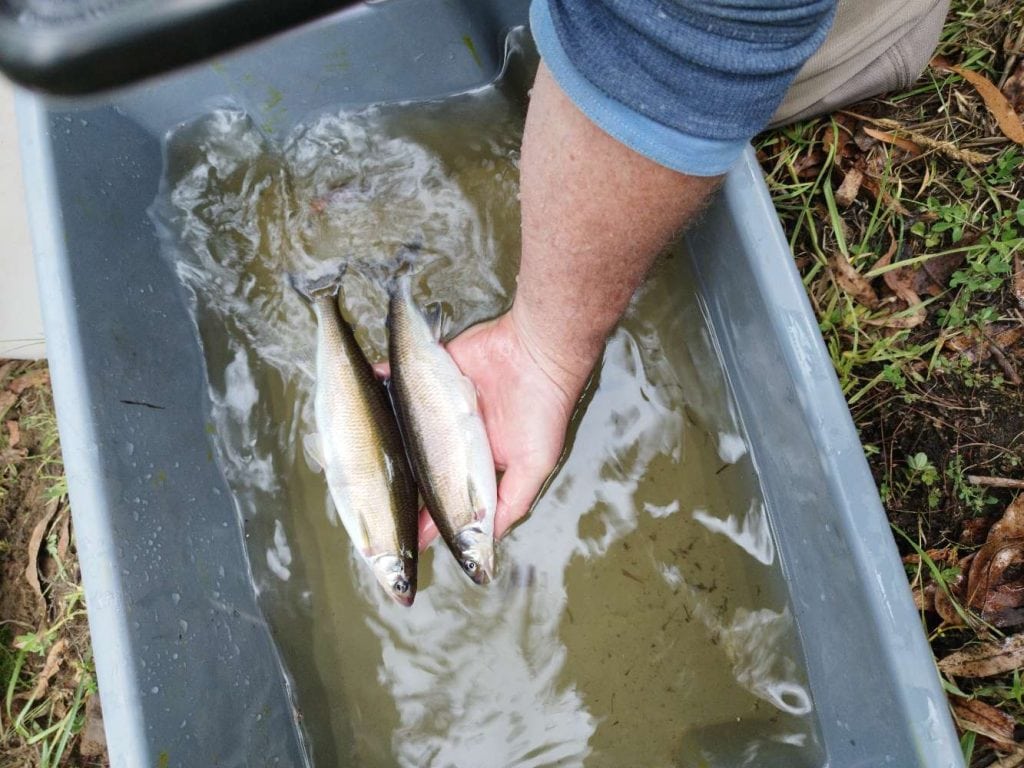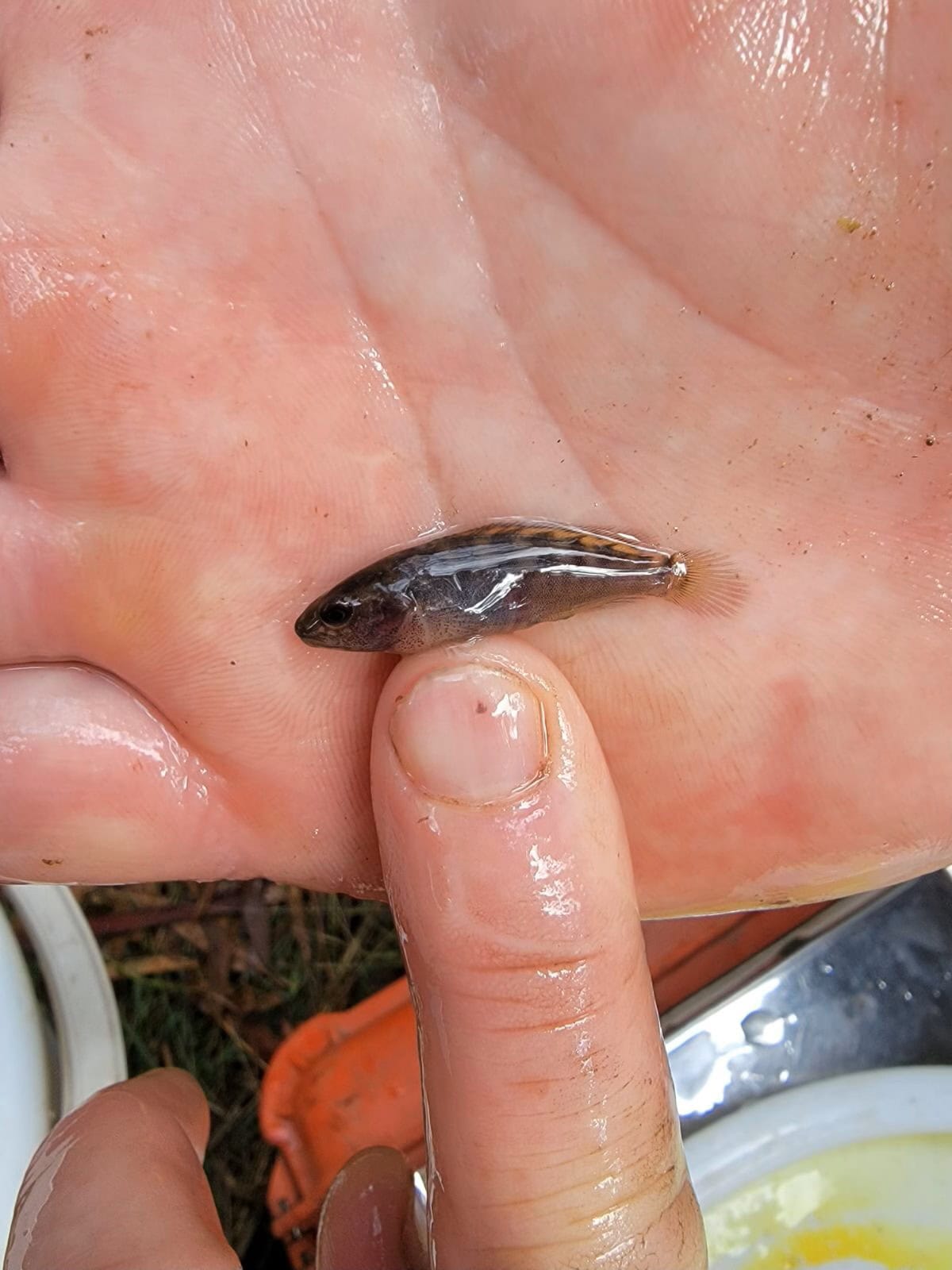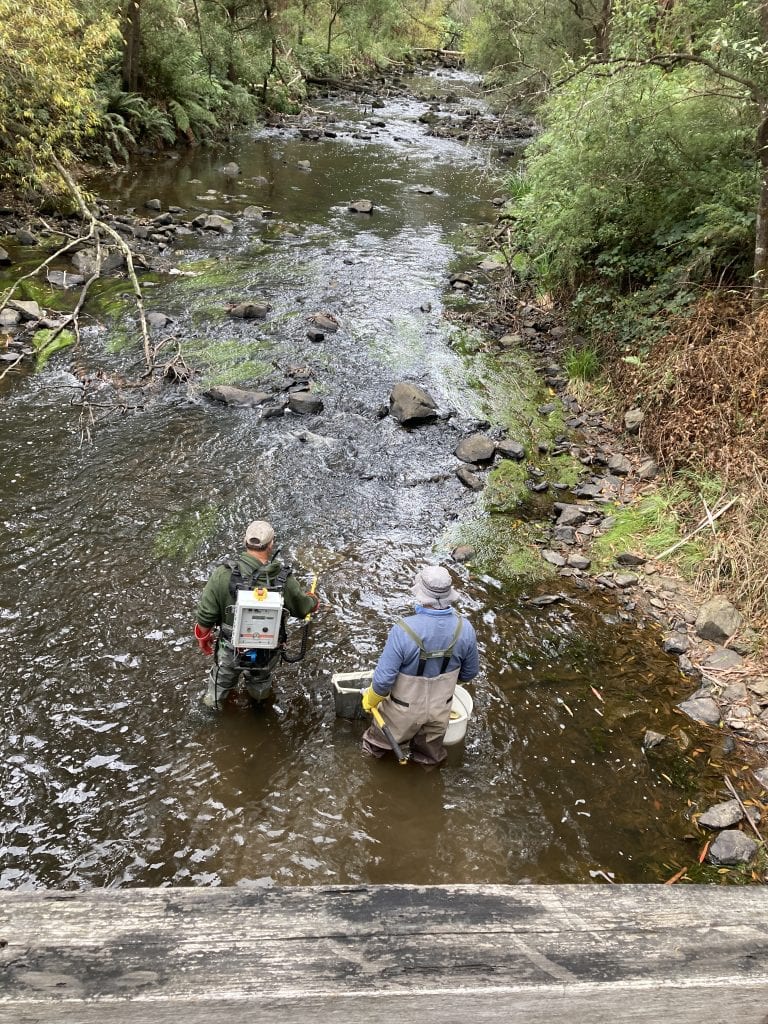Every year the health of select threatened and recreational fish species living in priority Victorian rivers is surveyed by DEECA’s Arthur Rylah Institute for Environmental Research (ARI). The output? Native Fish Report Cards (NFRC) that provide a snapshot of our native fish communities.
In the Corangamite region from 8th April, the Corangamite CMA helped facilitate a weeklong survey of fish along the Gellibrand River in the Otways. Using a combination of electrofishing and fyke netting, ARI researchers set themselves up at nine sites along the river to study the passage of fish, where they focused on recreational River Blackfish and threatened Australian Grayling species.
Gene Gardiner, a Project Officer for Land and Catchment Health at the Corangamite CMA, who engaged with local landowners to help facilitate the survey, said what they found was pleasing, particularly for threatened Australian Grayling.
“We found two Australian Grayling, which is a good result,” he said.
“One of the reasons why Australian Grayling are rarely found is because they must travel from the top of the catchment to the estuary to breed. Up until recently, man-made structures such as weirs and dams had prevented them from moving up and down the system, so in 2010 the Corangamite CMA introduced a program to restore fish passage in our priority fishways, including in the Gellibrand River. This involved either taking out migration barriers or putting in fish ladders so that fish could move around or over the barriers. While there may be other factors at play, it’s been pleasing to see that since we introduced these measures, we’ve seen more Grayling.”

“In terms of River Blackfish, as well as several larger adults, they found three one-year olds as well as one that was born this summer,” said Mr Gardiner.
Lauren Johnson, an Aquatic Ecology Officer at the ARI said the surveys have shown that River Blackfish recruitment has occurred.
“River Blackfish are sensitive to sediment in waterways as it smothers eggs which are laid on rocks or hollow logs. Actions such as the removal of barriers and providing water for the environment benefit both species by 1) giving Australian Grayling their cue to migrate downstream to spawn and attract juveniles back into the system, and 2) flushing the system of sediment to allow River Blackfish to successfully breed,” she said.

The electrofishing was observed by local landholders who are currently working on projects with the Corangamite CMA to improve the river health on and around their properties.
The 2024 Native Fish Report Cards will be released by the ARI later in the year, providing brief overviews of the health of target populations, incorporating the number of fish caught, the fish per 1km of waterway, and the longest and heaviest fish.

#ENDS#
64 Dennis Street, Colac VIC 3250
PO Box 159, Colac, VIC 3250
Hours: 8:30am – 5pm, Monday to Friday
T: 1800 002 262
E: info@ccma.vic.gov.au
BARWON WATER OFFICES
Hours: 8:30am – 5pm, Monday to Friday
All mail must be sent via our Colac office
PO Box 159, Colac, VIC 3250
T: 1800 002 262
E: info@ccma.vic.gov.au
 Close
Close